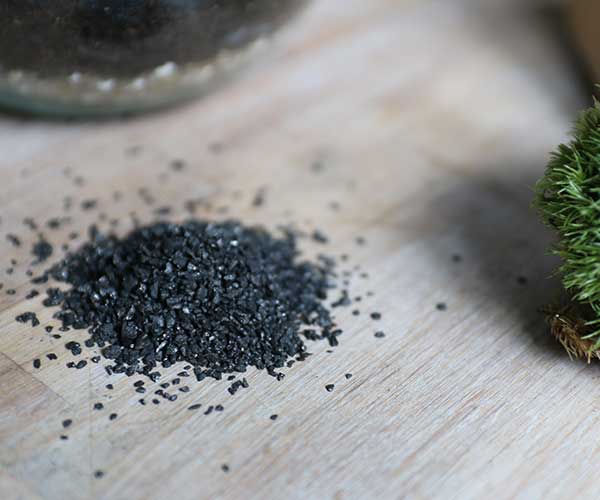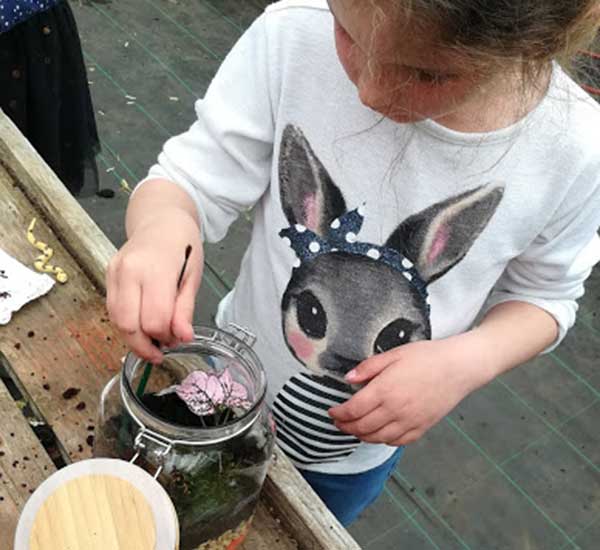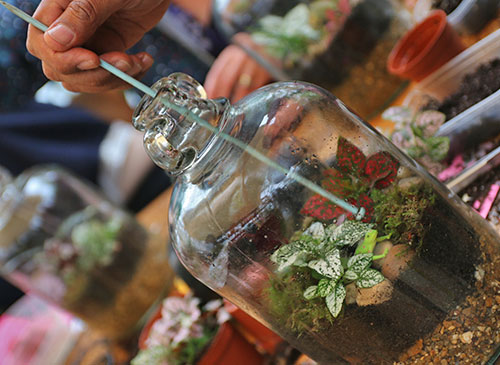
TERRARIUM ELEMENTS: The Difference Between an Open Terrarium and a Closed Terrarium
The trend for making your own terrarium is becoming ever popular – and it’s unsurprising as creating these beautiful gardens under glass is super satisfying! There are two distinct types of terrarium – the open terrarium and the closed terrarium, and in this blog post I am going to explain the differences between the two…
The Closed Terrarium
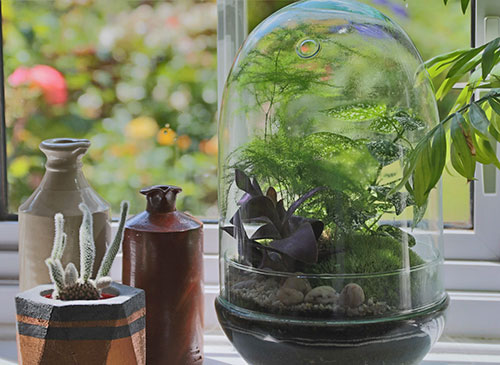
A closed terrarium featuring asparagus fern, tradescantia and hypoestes
The closed terrarium is the classic type, if you like. It’s usually made from a glass jar or other glass vessel (for example, a demijohn), which is completely enclosed with a lid such as a cork or screw top. This closed variety allows a unique environment to thrive inside the glass, where water, oxygen and CO2 are created – meaning there is almost zero maintenance once the terrarium has been made.
As these closed vessels cater to their own needs, there is often no need to water or otherwise interfere with this style of terrarium. People have been creating this original type for hundreds of years, since Nathanial Bagshaw Ward invented them in 1842, and often keep them for year after year with no issues.
This constantly damp environment inside the glass is perfect for plants which love humidity, particularly ferns and ivy. Most plants will survive in this style of terrarium, with the exception of cacti and succulents, as they prefer a dry environment. The lack of circulating air and high water content makes this a very inhospitable place for cacti and succulents who thrive in desert and other arid regions.
In the base of a closed terrarium, there is most often a layer of gravel and then a layer of soil, before plants and other items such as moss and stones are put in for decoration. Inside a closed terrarium, it is also possible to plant moss, as this is another botanical specimen which loves to be in a damp place.
The Open Terrarium
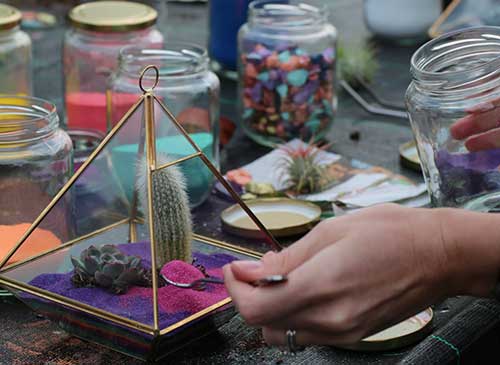
An open terrarium being created inside a geometric glass pyramid
The open terrarium does exactly what it says on the tin – it provides an open environment for any plants inside. This style of terrarium is popularly made into geometric shapes, such as pyramids, usually with panels of glass on all but one side. The open side allows the plants access to fresh air – which is why this terrarium type is ideal for cacti and succulents.
The base of an open terrarium will usually consist of sand or a very light soil which is enriched with grit or gravel to encourage drainage. One important point to remember about the difference between this type of terrarium and a closed terrarium is that an open terrarium needs to be watered. Unlike the closed which creates its own water and other elements, the open vessel must be given water as it does not create its own.
As cacti and other succulents love to be sparsely watered, putting moss alongside them does not work, due to the fact moss needs to be kept constantly damp in order to survive.

